Adapted from post on team member’s personal blog, “The Write Thing” and refers to incidents from December 2016.
The pilot phase for CfC has, of course, focused on teacher capacity building with our partners Meditrina and the Pehli Kiran School system. We’re going to follow up and do many new, fun things with the PK schools.

Now, we’re looking to create a network of friends across the country, who can eventually be brought together to build a “community of practice.” For this, we dedicated time to mapping the work of wonderful organizations in different cities.
We found that each urban context was different, with an entirely unique set of challenges. The theory, however, is that there is a spark that can be found and kindled in every child, no matter where.
Islamabad/Pindi – SPARC
Quick notes – SPARC is doing an amazing job. The Drop-In Centre (DIC) in Pirwadhai was a happy, child-friendly space, with bobbing birds, brightly coloured walls – and an in-house psychologist.
The DIC was located close to a major bus station, which is a magnet for mobile children. Now, the bus station officials are able to identify runaways, and to refer them to SPARC as well as the government-run National Child Protection Centre. Each has certain protocols, and the idea is to facilitate reunification with families, wherever they may be.
Most children at the centre, however, live with their families relatively close by. Many among them are internally displaced Pashtun families – or, as the government likes to call them, “temporarily displaced.”
Families displaced by conflict or disaster often do view their own situation as temporary, which was why many of the children at the DIC had not been enrolled in formal schools. The DIC represented something of a half-way house – a bridge between their former lives and the ones they could/should have in future.
Favourite picture of the day: children settling down for lunch without letting go of their bagpacks – because they were theirs.

Peshawar – Dost
Driving to Peshawar in December a week after the “anniversary,” it was only natural to be haunted by thoughts of the Army Public School attack.
The Dost Welfare Foundation runs a massive, state-of-the-art drug rehabilitation centre in Hayatabad, to address the alarmingly high incidence of substance abuse on the streets of Peshawar. Our primary interest, however, was in the far smaller shelter home – the Dost Guloona Centre.

This, too, was by the Daewoo bus station on the outskirts of the city. Even though the principle was similar, the reality of the area was radically different from Pirwadhai station. Peshawar has a much higher number of children “of” the street, who do not return to their families at night. Here, too, there is a huge problem of runaways. But the challenges they face are greater – evident through the large number of sleazy motels with beds for Rs. 30 a night, and the spectres of predators passing through the station.
It’s a difficult job, handling the boys at the shelter. Hope to stay in touch with the strong and wonderful people at the helm, and to offer something of value to those drifting through the centre.
Karachi – Imkaan/Khel
Karachi is the biggest – and in some ways the toughest – city of Pakistan. The streets have their own laws, governed by the politics of ethnicity and business. This includes the business of land mafias, drug mafias, petty criminals and youth gangs.
There are no pictures of the drive to Macchar Colony (literally translated as “Mosquito Colony”). But it was true, what Imkaan said, about children standing in alleyways and gambling with bits of paper during the hours that others were in school.
And then we entered Khel – a little space, full of potential, that is the new recreation centre for the children of Macchar Colony.
Our host from Imkaan, the Programme Manager of Khel, was one of those people who could reach out to a hundred children at once. It was quite a feat because these children were an independent minded group, many of whom did not attend any form of school. So it was unsurprising that at Khel there was only one rule – articulated often, and in unison:
Apnay Haath,
Apnay Paas!(Our Hands, To Ourselves!)
Unlike Peshawar, the gender balance here was more even, and the girls had as much spirit as the boys. To their bemusement (and amusement), the days started with Om-based meditation and breathing exercises. But slowly, hardly known to themselves, the children were becoming accustomed to a routine.
There was much to observe during the colouring exercise – the hoarding of crayons, the effort it took to have them returned, and the ways in which individual children interacted with one another and with newcomers. It has only been a few months since Khel opened, and it will be a while until systems take hold.
But we will continue to watch with interest, and do our best to lend a hand.
